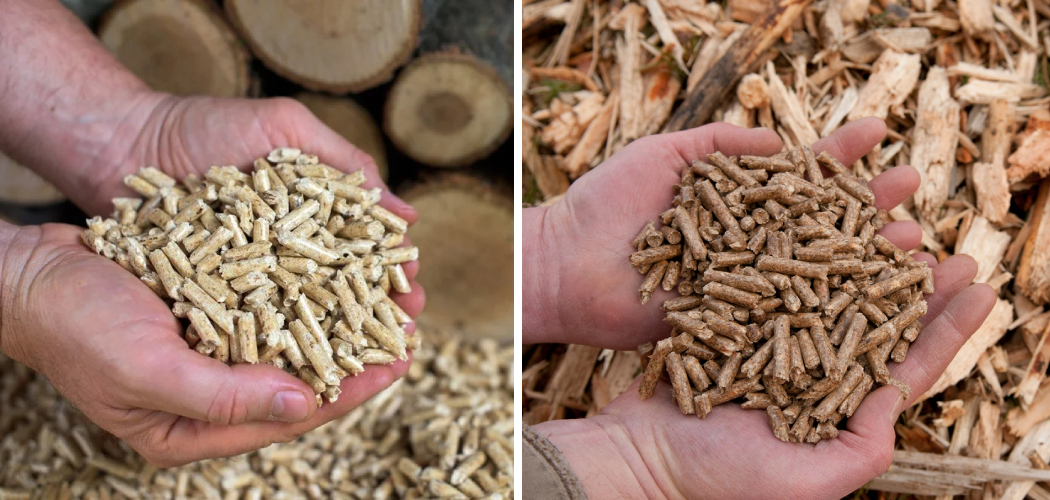Do you use wood pellets for your furnace or outdoor fireplace, but are unsure how best to store them? If so, then you’ve come to the right place! In this article on how to store wood pellets outside, we’ll be discussing the proper steps and techniques to ensure your pellets are stored securely and properly outside.
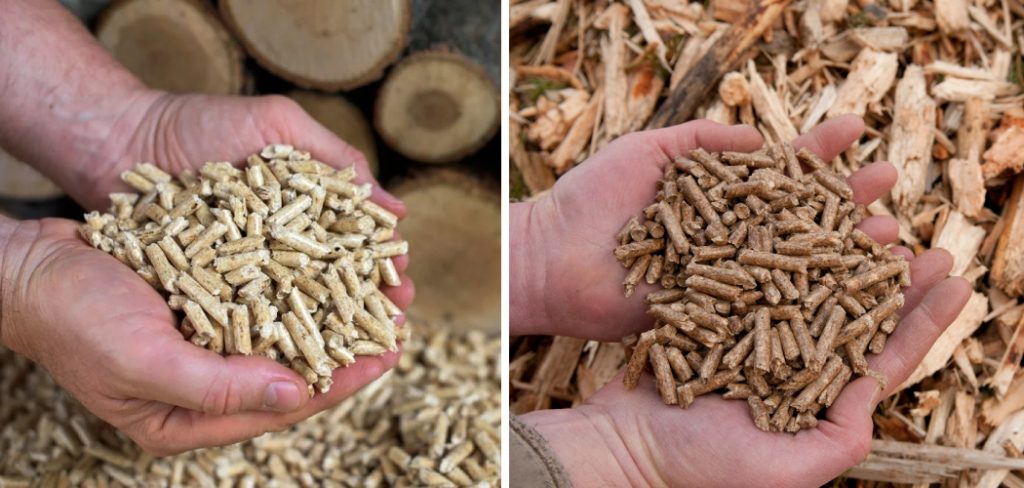
By following certain guidelines and utilizing a few simple strategies, it is possible to protect your investment of time, energy and money when it comes to storing wood pellets out in the elements. Whether you’re just getting started with wood pellet storage outdoors or have been doing it for years, read on for some practical tips you need to learn now!
Necessary Materials and Tools
Given below is the list of materials and tools needed for properly storing wood pellets outside:
- A Waterproof, Rodent-proof and Airtight Storage Bin (Lowes or Home Depot Usually Carries These).
- Waterproofing Sealant
- Small Tarp to Protect From Wind/rain
- Hammer
- Nails
- Plywood Sheet (Optional)
11 Step-by-step Guidelines on How to Store Wood Pellets Outside
Step 1: Choose an Area
Choose an area that is not exposed to heavy winds and has good drainage. You don’t want the pellets to get waterlogged, so make sure the area is away from any potential sources of standing water. It’s also important to pick a spot that is accessible and easy to get to when you need more pellets.
But make sure that the spot is not too close to your house, either, as you don’t want any rodents trying to get in. This spot should also be away from any combustible materials or flammable liquids. Always read the instructions of your pellet storage container to make sure it is safe to store wood pellets in that location.
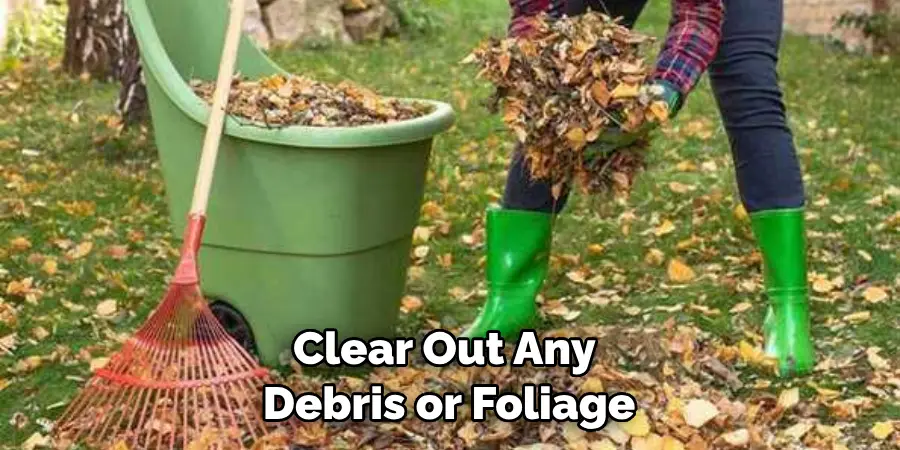
Step 2: Prepare the Area
Clear out any debris or foliage in the chosen area and level it out with a shovel. This will make it easier to set up the storage bin and provide a nice, flat base for it to rest on. But make sure that the area is dry before you start setting up, as you don’t want any moisture getting inside the storage bin.
It’s also a great idea to cover the area with some plywood, as this will help keep out any critters that may try to get in. When you’re done, make sure to use some waterproofing sealant around the edges of the plywood.
Step 3: Place the Bin
Place the waterproof storage bin in your chosen spot, making sure there is at least six inches of clearance around all sides of the bin. This helps keep air flowing and prevents the wood pellets from getting too damp. This also helps the bin from overheating, which can damage the pellets and cause them to mold.
It is also important that you ensure the lid of the bin is securely fastened. This will help keep out rodents, rain, and wind. It’s also a good idea to place the bin on top of some plywood, as this will help keep any moisture from getting inside.
Step 4: Protect from Wind/Rain
Use a small tarp to cover the bin if it is going to be exposed to wind or rain. This will help keep your wood pellets dry and protected. This is especially important if the bin is in an area that may be exposed to heavy winds, as strong gusts can cause your pellets to become damaged and unusable.
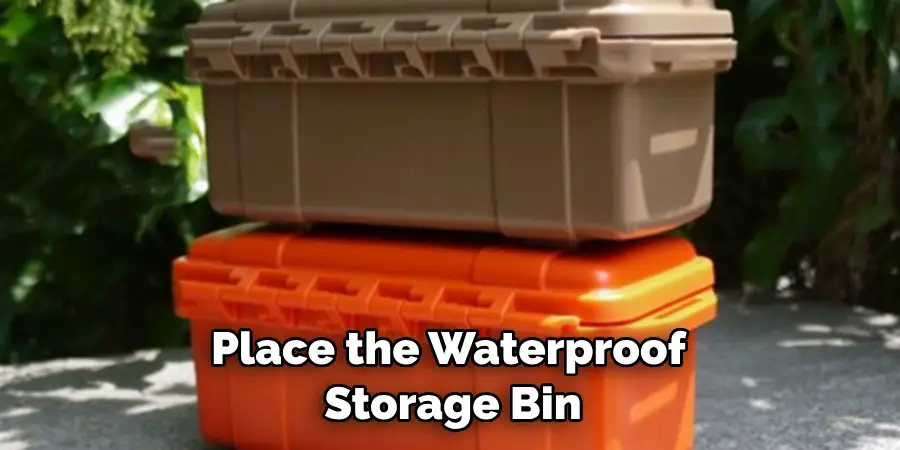
Make sure you secure the tarp to the sides of the bin with nails or string for added protection. This will also help keep it in place during strong winds. It’s also a good idea to keep an eye on the weather and cover the bin if necessary.
Step 5: Seal the Bin
Seal the edges of the bin with a waterproofing sealant. This will ensure that no water seeps into your wood pellets and keeps them dry until you’re ready to use them. But make sure that you don’t forget to leave at least six inches of clearance around all sides of the bin, as this will help ensure air circulation and prevent your pellets from becoming too damp.
It’s also a good idea to check the sealant periodically and reapply if necessary. You can also use adhesive tape around the edges of the bin for added protection.
Step 6: Cover the Bin
Cover the top of the bin with some plywood or other material (make sure it is treated so as not to rot). This will help keep out birds, rodents and other critters. It also helps keep out any potential rain or wind that may have been missed by the tarp.
Make sure to nail it down securely, as strong gusts of winds can easily pick up an unsecured sheet of plywood. But make sure to leave at least two inches of clearance between the plywood and the top of the bin, as this will help ensure air circulation.
Step 7: Secure the Bin
Secure the lid to the bin using a hammer and nails (if necessary). This will ensure that your wood pellets are kept safe from animals and thieves. This will also help keep out any potential moisture that may have been missed by the tarp and plywood.

Make sure to use stainless steel or galvanized nails, as they won’t rust and cause damage to your bin over time. But make to leave some space between the nails and the lid, as this will help ensure air circulation. It’s also a good idea to use some adhesive tape around the edges of the lid for added protection.
Step 8: Label & Date
Be sure to label your bin with the current date so you’ll know when it was last opened. This will help you keep track of how fresh your wood pellets are and if they need to be replaced. This also helps you keep track of how much pellet fuel you have and when it needs to be replenished. It’s also a good idea to label the bin with your name and address in case it gets misplaced or stolen. You can use a waterproof marker for this.
This will help ensure that the bin and your wood pellets get returned to you if it does get lost. But make sure to hide the label from public view, as you don’t want your address to be publicly available.
Step 9: Monitor Humidity
Monitor the humidity levels inside the bin periodically, as high humidity can cause mold growth in your wood pellets. If necessary, use a dehumidifier to ensure the optimal moisture levels are maintained. This will help keep your wood pellets from becoming too damp and unusable.

You can also use a hygrometer or thermometer to measure the humidity levels inside the bin. However, make sure to check it regularly and empty the dehumidifier when necessary. It’s also a good idea to use a desiccant inside the bin to help absorb any excess moisture. You can use silica gel packs, which are available at most hardware stores.
Step 10: Monitor Temperature
Monitor the temperature inside the bin periodically as well, as extreme temperatures can cause your wood pellets to degrade over time. If possible, store them in an area that stays between 50-90 degrees Fahrenheit (10-32 degrees Celsius).
It’s also a good idea to use a thermometer to measure the temperature inside the bin, as this will help you keep track of how hot or cold it is. But make sure that you don’t leave a thermometer in the bin for too long, as it can affect the accuracy of the readings.
Step 11: Rotate Stock
Rotate the stock in your bin to ensure that the oldest pellets are used first. This will help you get the most out of each bag and prevent them from going to waste. It’s also a good idea to keep track of the date each bag was opened, so you know when it should be used up.
And make sure to use any pellets that are approaching their expiration date quickly, as leaving them too long can affect their burning quality. This will also help keep your pellets from getting too damp or moldy. Although wood pellets can last for years if stored correctly, it’s always best to use them as soon as possible.

By following these steps on how to store wood pellets outside, you can be sure that your wood pellets remain dry, fresh and safe when stored outside. Keep in mind that proper storage is key in making sure your wood pellets last as long as possible! If followed, these steps should help you keep your wood pellets safe and secure for years to come.
Do You Need to Use Professionals?
In most cases, you won’t need to use professionals in order to properly store wood pellets outside. However, if you are having difficulty following the steps listed above or have any questions about how to best store your wood pellets, it is always a good idea to consult with a professional.
They can help you figure out what type of bin and materials are best for storing your wood pellets and provide advice on how to store them safely and securely.
No matter how you choose to store your wood pellets, by following these steps you can be sure that they are protected from the elements and last as long as possible. So make sure to take the necessary steps to properly store your wood pellets outdoors and keep them in good condition!
Frequently Asked Questions
Q: What is the Best Way to Store Wood Pellets Outside?
A: The best way to store wood pellets outside is in a waterproof, rodent-proof and airtight storage bin. Additionally, it is important to waterproof the edges of the bin, cover it with a tarp and plywood sheet, secure the lid with nails, monitor humidity levels inside the bin and rotate stock regularly.
Q: How Long Will Wood Pellets Last When Stored Outside?
A: Generally speaking, wood pellets will last up to 12 months when stored outside. However, this can vary greatly depending on the environment and conditions in which they are stored. To ensure maximum shelf life, follow the steps outlined above diligently.
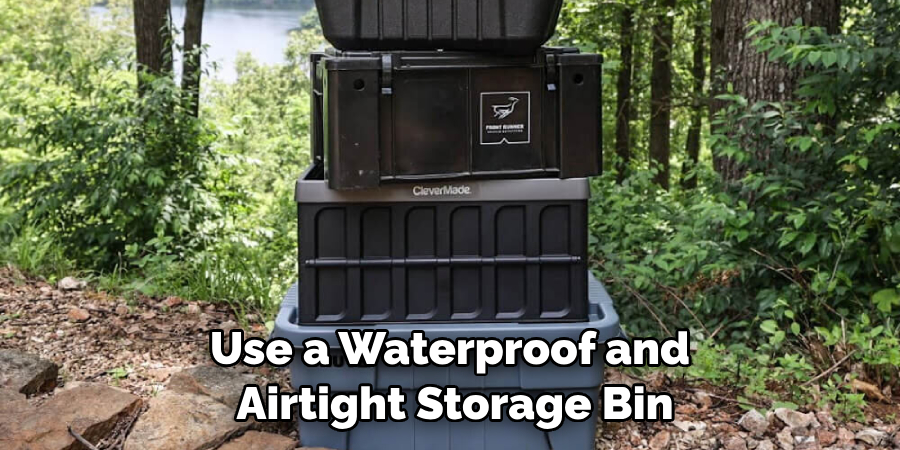
Q: What Temperature Should Wood Pellets Be Stored at?
A: The ideal temperature for storing wood pellets is between 50-90 degrees Fahrenheit (10-32 degrees Celsius). This will ensure that your pellets remain at their best and do not degrade over time due to extreme temperatures. It is also important to monitor the temperature inside the bin periodically.
Q: How Can I Keep Rodents Away from My Wood Pellets?
A: The best way to keep rodents away from your pellets is to use a waterproof and airtight storage bin that is not prone to rodent penetration. Additionally, using a tarp and plywood sheet can help protect them from the elements and discourage rodents from getting in. Finally, be sure to secure the lid of the bin with nails so that any animals cannot get in.
Conclusion
Do you use wood pellets for your furnace or outdoor fireplace, but are unsure how best to store them? If so, then you’ve come to the right place! In this article, we’ll be discussing the proper steps and techniques to ensure your pellets are stored securely and properly outside.
By following this article on how to store wood pellets outside certain guidelines and utilizing a few simple strategies, it is possible to protect your investment of time, energy and money when it comes to storing wood pellets out in the elements. Whether you’re just getting started with wood pellet storage outdoors or have been doing it for years, read on for some practical tips you need to learn now!

